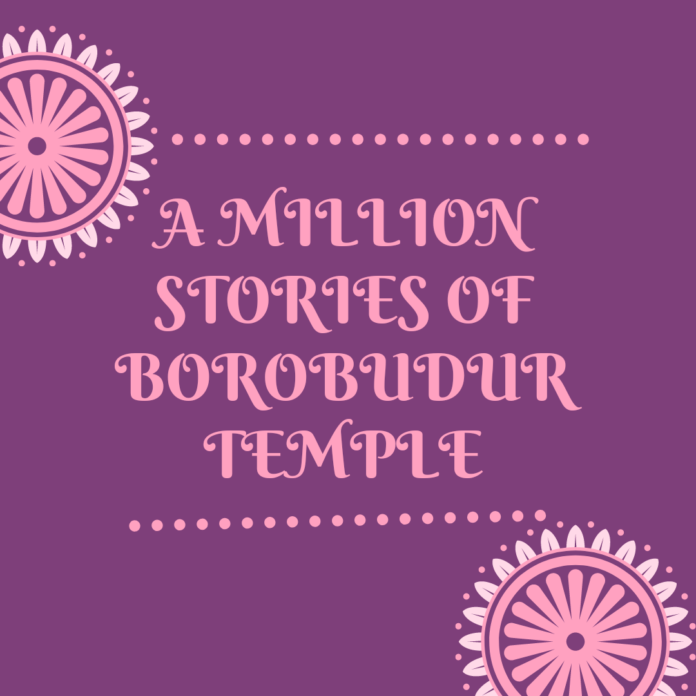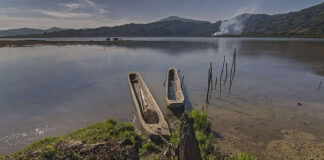Frank Hole and Robert F. Heizer (1990) also refer to archaeology as a study of the human past that is studied primarily through relics. Archaeology is also an arrangement of methods and procedures for investigating the past that depicts the data obtained and the academic training and theoretical orientation of the ecologist. Instead of the above definitions and definitions, it can be formulated that the field of archaeology is a discipline that studies humans and past cultures based on the legacy with a systematic method of investigation using various approaches to other disciplines such as history, anthropology, geology, geography, and mathematics. , physics, zoology, botany, arts, engineering and others.
The reliance on cultural heritage is not only focused on aspects of the material that are categorized as man-made but also those that are not artificial but result indirectly from the impression of human action in fostering their culture which is categorized as non-artefact. So every historical discovery is very useful in proving the truth of history in a country or foreign countries. In archaeological research, many discoveries may believe by today’s society but all of the findings are true. Less acceptance than society is when something left behind by past humans overcomes today’s human thinking that past humans were more sophisticated in their formation and materials for their formation were adapted to the present. For example, the construction of the Borobudur temple in Indonesia, which is one of the most insured temples in Southeast Asia apart from Angkor Wat.
Borobudur is a Buddhist temple located in Borobudur, Magelang, Central Java, Indonesia. This temple is located approximately 100 km to the southwest of Semarang, 86 km to the west of Surakarta, and 40 km to the northwest of Yogyakarta. This stupa-shaped temple was founded by Mahayana Buddhists around the 8th-century Mas8th-century the reign of Wangsa Syailendra. Borobudur is the largest Buddhist temple or temple in the world, as well as one of the largest Buddhist monuments in the world. This monument is erected on six square terraces on which there are three circular courtyards, on which walls are decorated with 6 types of relief panels (Bhadracari, Gandawyuha, Jataka, Rwanda Lalitavistara and Karmawibhangga) and originally contained 504 Buddha statues. Borobudur has the largest and most complete collection of Buddhist reliefs in the world. The largest main stupa lies in the centre and crowns this building, surrounded by three circular rows of 72 hollow Stupas in which a Buddha statue sitting cross-legged in a perfect lotus position with the Dharmachakra mudra (turning the wheel of dharma).
Glorifying Buddha as well as functioning as a place of pilgrimage to guide mankind from the realm of worldly lust to enlightenment and wisdom according to Buddha’s teachings. the next rung through the three realm levels in Buddhist cosmology. The three levels are Kamadhatu (the realm of lust), Rupadhatu (the realm of form), and Arupadhatu (the realm of intangibility). During this journey, the pilgrim walks through a series of aisles and stairs to witness the beautiful relief panels carved on walls and balustrades.
According to historical evidence, Borobudur was abandoned in the 14th century along with the weak influence of the Hindu and Buddhist kingdoms in Java and began to gain influence, Islam. The world first became aware of this form of the building since it was discovered in 1814 by Sir Thomas Stamford Raffles, who at that time was serving as the General Governor of England in Java. Excavation of this temple was also carried out by H.C Cornelius in 1817-1835. Then continued by Hartman 1832, Schaefer 1845, Wilsen 1849, Brumund 1856, and Van Kinsbergen 1873. Since then, Borobudur has experienced a series of rescue efforts and maintenance work. The biggest improvement project was held in the period 1975 to 1982 with the efforts of the Kingdom of the Republic of Indonesia and UNESCO, then this historic site was included in the list of World Heritage Sites. Borobudur is still used as a place of religious pilgrimage, every year Buddhists who come from all over Indonesia and threaten the state gather at Borobudur to commemorate the Trisuci Waisak. In the world of travel, Borobudur is the single object of travel in Indonesia that is most traversed.
In Indonesian, ancient religious buildings are called temples; The term candi is also used more broadly to refer to all ancient buildings dating from the Hindu-Buddhist era in the archipelago, for example, gates, gates, and petitions (pools and baths). The origin of the name Borobudur is unclear, although the names of most temples in Indonesia are unknown. The name Borobudur was first written in the book “History of the Island of Java” by Sir Thomas Raffles. Raffles wrote about a monument called Borobudur, but no older document mentions that name the same. The only ancient Javanese manuscript that indicates of a Buddhist sacred building that may refer to Borobudur is Nagarakretagama, written by Mpu Prapanca in 1365.
The name Bore-Budur, which was later written as Borobudur, was probably written by Raffles in English grammar to refer to the village closest to the temple, namely the village of Bore (Boro), most temples are often named after the village where the temple stands. Raffles also suspected that the term ‘Budur’ might be related to the Javanese term Buddha which means “ancient” – hence the meaning, “ancient Boro”. However, other archaeologists think that the name Budur comes from the term buddha which means mountain.
Many theories try to explain the name of this temple. One of them states that this name probably comes from the word Sambhara Budhara, which means “mountain” (Bhandara) where the slopes are located terraces. In addition, there are several etymologies of others. For example, the word Borobudur comes from the words of “the Buddhas” because of the shift in sound to Borobudur. Another explanation is that this name comes from the two words “bara” and “beduhur”. The word bara is said to have originated from the word Vihara, while there is another explanation where bara comes from Sanskrit which means temple complex or monastery and beduhur means ” high “, or reminiscent in Balinese which means” above “. So the point is a monastery or hostel on high ground.
The historian J.G. de Casparis 1950 argues that Borobudur is a place of worship. Based on the Karangtengah and Tri Tepusan inscriptions, Casparis estimates that the builder of Borobudur is the king of Mataram from the Syailendra Wangsa named Samaratungga, who built around 824 AD The giant building could only be completed at the time of his daughter’s birth. Ratu Pramudawardhani. Borobudur development is estimated to take half a century. In the Karangtengah inscription, there is also mention of the bestowal of land sima (tax-free land) by Kahulunan (Pramudawardhani) to maintain Kamulan which is called Bhumisambhara. The term Kamulan itself comes from the word mula which means the place of origin, a sacred building to honour the ancestors, possibly the ancestors of the Sailendra House. Casparis budgeted that Bhumi Sambhara Bhudhara in Sanskrit which means “The hill of the virtue of the ten levels of bodhisattva”, is the original name of Borobudur.
Apart from Borobudur, there are several Buddhist and Hindu temples in the area. During the discovery and preservation work in the early 20th century, another Buddhist temple, namely Mendut Temple and Candi Pawon, stretched out in a straight line there is a stone-paved road lined with balustrades on both sides that connects the three temples. There is no physical evidence of a stone-paved and fenced highway and maybe this is just a fairy tale, but experts suspect that there is indeed a symbolic unity of these three temples.
These three temples (Borobudur-Pawon-Mendut) have the same style of art and decoration and indeed originate from the same temples which strengthen the suspicion of a ritual relationship between the three temples. There must be a sacred connection, but how the process of the pilgrimage religious rituals is carried out is not certain. In addition to the Mendut and Pawon temples, around Borobudur, there are also several other ancient relics, including various discoveries of pottery such as pots and monkey pots which show that around Borobudur there are several residential areas. Ancient discoveries around Borobudur are now stored at the Karmawibhangga Museum Borobudur, which is located to the north of the temple next to the Samudra Raksa Museum.
Not far north of the Pawon temple, there are ruins of a former Hindu temple called the Banon Temple. In this temple, there are several statues of Hindu deities in good condition, namely Shiva, Vishnu, Brahma, and Ganesha. However, the stone originating from the Banon Temple is so scarce that it is not possible to carry out the original formation. At the time of the discovery, the Banon statues were transported to Batavia (now Jakarta) and are now stored in the Indonesian National Museum.
This archaeological discovery has revealed the history of the Sailendra Dynasty in the past in Indonesia. This archaeological discovery has made Indonesia famous as a Southeast Asian country that has the largest history of Buddhist governance. It cannot be denied that the discovery of the Borobudur temple in Indonesia is the largest archaeological discovery in Southeast Asia. So through this discovery, the historical truth is answered which says that there is a place of society in Magelang, Central East Java, Indonesia under the influence of Buddhism. In addition, this discovery has also become a symbol for the Indonesian state which has ancient Buddhist adherents.
In addition, the results rather than digging into the field of aarchaeologyyyare also a source of reference for figures in producing writing because sources from the field of archaeology are the primary source or the main source in producing scientific writing. Therefore, the field of archaeology is used as a tool in the flow of science and social science in carrying out studies. In addition, the results of the search for archaeological digs provide concrete or tangible evidence. The existence of such evidence can also influence the truth of an unbelievable but true historical event. This aims to open the minds of young people or future generations in knowing for sure e their origins. Therefore, the field of archaeology is very important today.
Authored By Rizky Cahya Sethyorini










